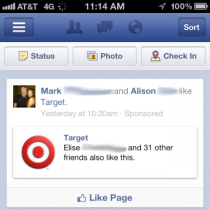By Todd Bacile, Ph.D. | October 14, 2014
Negative Yelp Reviews
Negative Yelp reviews are a concern for business owners. The cause for worry is due to various studies illustrating that negative online reviews can decrease consumers’ purchase intent and can decrease revenue by sizable amounts.
My research on social media complaints and the impact of consumer-generated comments directly relates to Yelp. Negative Yelp reviews came up in a discussion at an industry conference where I was the keynote speaker discussing social media’s impact on business.
“What can we do?,” asked a small business owner, who was concerned that the negative comments would impact her business. Her concern is legitimate.
The Problem of Negative Reviews
Negative reviews generally have a greater impact on a person’s perception of a business versus positive reviews. This negativity-bias can be traced to economics’ and psychology’s theory of loss aversion, where a loss (i.e., something negative) is a more powerful piece of decision-making criteria versus a gain (i.e., something positive).
In the context of online reviews, positive comments are not nearly as memorable or impressionable as negative comments and complaints. Yet, there may be a useful strategy to combat negative reviews that every business owner has access to: time.
Temporal Cues & Negative Reviews
A study recently published in the Journal of Marketing Research highlighted the value of temporal contiguity cues in online reviews. The inclusion of temporal cues, such as a review written on the day of product consumption (e.g., comments including “today” or “we just went to this place”) had a profound effect.
In reviews which included temporal cues, consumers perceived the value of positive reviews to be stronger, while the value of negative reviews became weaker. That’s right, even a negative review with temporal cues did not become more impressionable, meaning the power of a negativity-bias was diminished.
The study, written by Zoey Chen and Nicholas Lurie, analyzed over 65,000 Yelp reviews across numerous experiments to arrive at the final conclusions. Read the full study for the complete details.
Using Time as a Review Strategy
Theoretically speaking, the study is fascinating. In a managerial context, here’s an operational strategy to benefit from the findings of the study: ask for reviews – be it positive or negative – immediately! Create marketing communications or retail signage promoting the importance of posting a review “today”.
If it fits within your business model, provide incentives to consumers, such as offering a freebie item or discount for “posting your positive or negative review and mentioning you came in today.” If you have front-line service workers be sure a quick line is communicated to customers (e.g., “We would love a review – please explicitly say you were in here today!”)
If you’ve exhausted your efforts as to how to get negative reviews removed, the findings from the study and the suggested strategy above may cause your business to not suffer as much from negative Yelp reviews.
This is a unique spin on the old adage, “Time heals all wounds.”
Dr. Todd Bacile (@toddbacile) is a marketing professor at Loyola University New Orleans, a marketing consultant, and a professional keynote speaker who features presentations on social media marketing, search engine marketing, online complaints, online reputation management, and customer service issues at corporate and industry conferences. He holds a Ph.D. in marketing from Florida State University. Social Media Marketing Magazine ranks him as one of the Top 100 Marketing Professors on Twitter. Have a question or comment? Post it here and you will receive a response.

 Social media complaints
Social media complaints Social media complaints
Social media complaints
 Decreasing the number of clicks to make a purchase is part of the progression of marketing’s ‘Place’ element within the
Decreasing the number of clicks to make a purchase is part of the progression of marketing’s ‘Place’ element within the 

 I’ve written before about Facebook “accidentally”
I’ve written before about Facebook “accidentally”  Item #4 points to another problem:
Item #4 points to another problem:  A winner can be determined between the hash marks — and the hashtags. This past weekend marked several high-profile
A winner can be determined between the hash marks — and the hashtags. This past weekend marked several high-profile 









 Sociocultural shifts change how information is disseminated and digested. For example, one of the founding principles for
Sociocultural shifts change how information is disseminated and digested. For example, one of the founding principles for  Media consumption is moving toward
Media consumption is moving toward  The more you blog, the more connections you will make. How or what you make of your network is up to you. Every comment, retweet, Like, +1, and/or the action of sharing one of your posts has the opportunity to
The more you blog, the more connections you will make. How or what you make of your network is up to you. Every comment, retweet, Like, +1, and/or the action of sharing one of your posts has the opportunity to  For such a young company, Facebook already has created numerous debates about its ethical / legal use of consumers’ information and questionable business decisions. Today’s businesses are expected to maintain a certain level of
For such a young company, Facebook already has created numerous debates about its ethical / legal use of consumers’ information and questionable business decisions. Today’s businesses are expected to maintain a certain level of  This is how
This is how  Facebook has been under the microscope for allegedly
Facebook has been under the microscope for allegedly